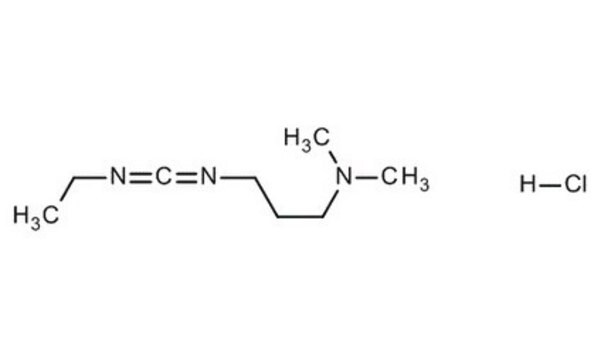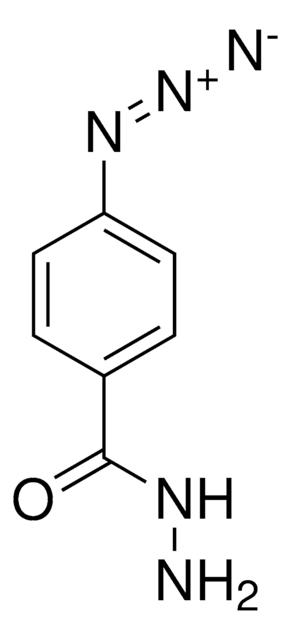39391
N-(3-Dimethylaminopropyl)-N′-ethylcarbodiimide
≥97.0% (T), for peptide synthesis
Sinónimos:
N-Ethyl-N′-(3-dimethylaminopropyl)carbodiimide, EDC, WSC
About This Item
Productos recomendados
product name
N-(3-Dimethylaminopropyl)-N′-ethylcarbodiimide, ≥97.0% (T)
assay
≥97.0% (T)
form
liquid
reaction suitability
reaction type: Coupling Reactions
refractive index
n20/D 1.461
density
0.877 g/mL at 20 °C (lit.)
application(s)
peptide synthesis
storage temp.
−20°C
SMILES string
CCN=C=NCCCN(C)C
InChI
1S/C8H17N3/c1-4-9-8-10-6-5-7-11(2)3/h4-7H2,1-3H3
InChI key
LMDZBCPBFSXMTL-UHFFFAOYSA-N
General description
Application
signalword
Danger
Hazard Classifications
Acute Tox. 3 Dermal - Acute Tox. 4 Oral - Aquatic Acute 1 - Aquatic Chronic 1 - Eye Dam. 1 - Skin Corr. 1A - Skin Sens. 1A - STOT RE 2 Oral
target_organs
Stomach,large intestine,lymph node
Storage Class
6.1A - Combustible acute toxic Cat. 1 and 2 / very toxic hazardous materials
wgk_germany
WGK 3
flash_point_f
Not applicable
flash_point_c
Not applicable
ppe
Faceshields, Gloves, Goggles, type ABEK (EN14387) respirator filter
Certificados de análisis (COA)
Busque Certificados de análisis (COA) introduciendo el número de lote del producto. Los números de lote se encuentran en la etiqueta del producto después de las palabras «Lot» o «Batch»
¿Ya tiene este producto?
Encuentre la documentación para los productos que ha comprado recientemente en la Biblioteca de documentos.
Los clientes también vieron
Artículos
Collagen molecules play a critical role in tissue architecture and strength, and in cell-matrix interactions as insoluble ligands to regulate the diverse phenotypic activities of cells.
Collagen molecules play a critical role in tissue architecture and strength, and in cell-matrix interactions as insoluble ligands to regulate the diverse phenotypic activities of cells.
Collagen molecules play a critical role in tissue architecture and strength, and in cell-matrix interactions as insoluble ligands to regulate the diverse phenotypic activities of cells.
Collagen molecules play a critical role in tissue architecture and strength, and in cell-matrix interactions as insoluble ligands to regulate the diverse phenotypic activities of cells.
Nuestro equipo de científicos tiene experiencia en todas las áreas de investigación: Ciencias de la vida, Ciencia de los materiales, Síntesis química, Cromatografía, Analítica y muchas otras.
Póngase en contacto con el Servicio técnico










